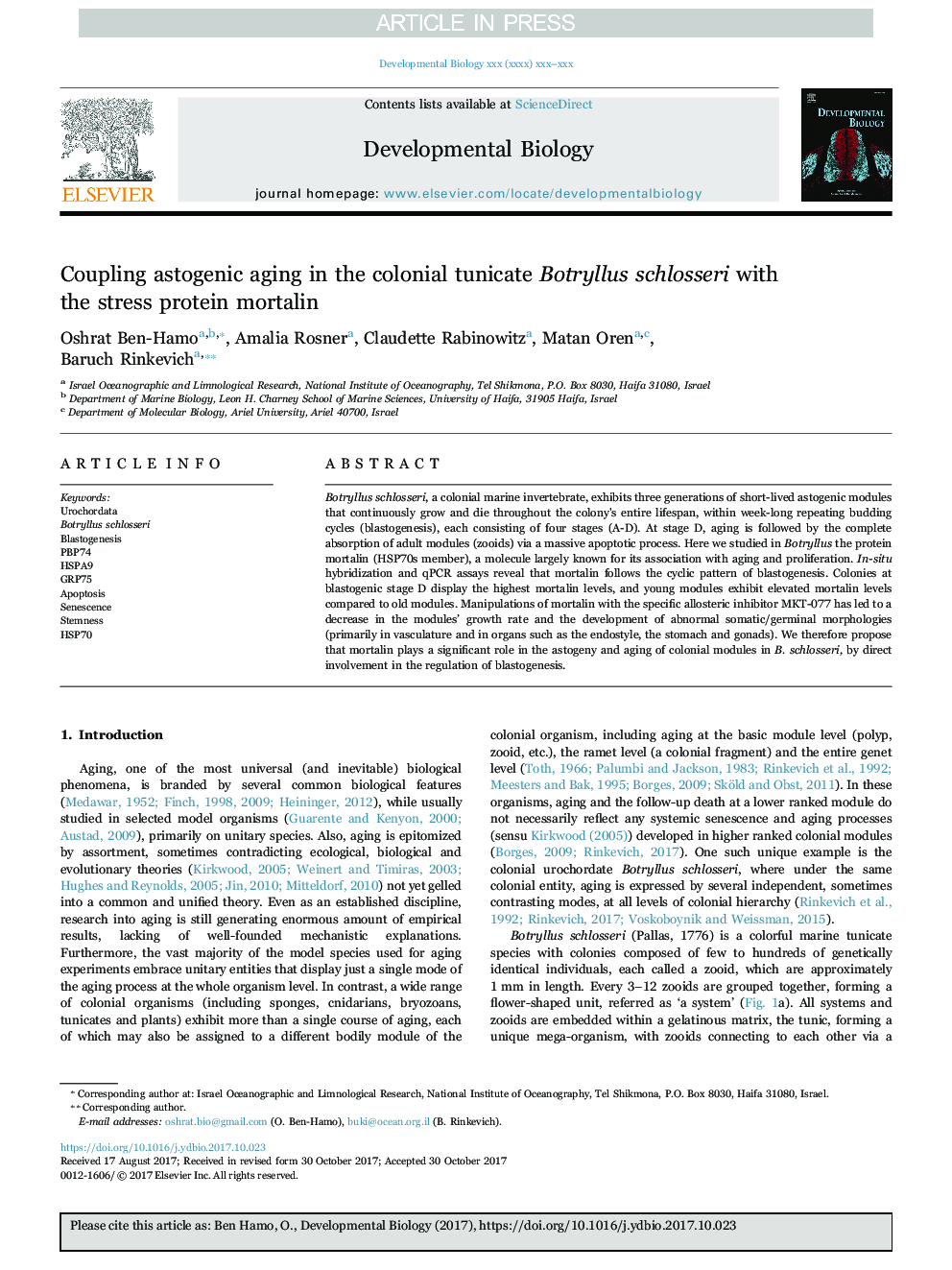| Article ID | Journal | Published Year | Pages | File Type |
|---|---|---|---|---|
| 8467694 | Developmental Biology | 2018 | 14 Pages |
Abstract
Botryllus schlosseri, a colonial marine invertebrate, exhibits three generations of short-lived astogenic modules that continuously grow and die throughout the colony's entire lifespan, within week-long repeating budding cycles (blastogenesis), each consisting of four stages (A-D). At stage D, aging is followed by the complete absorption of adult modules (zooids) via a massive apoptotic process. Here we studied in Botryllus the protein mortalin (HSP70s member), a molecule largely known for its association with aging and proliferation. In-situ hybridization and qPCR assays reveal that mortalin follows the cyclic pattern of blastogenesis. Colonies at blastogenic stage D display the highest mortalin levels, and young modules exhibit elevated mortalin levels compared to old modules. Manipulations of mortalin with the specific allosteric inhibitor MKT-077 has led to a decrease in the modules' growth rate and the development of abnormal somatic/germinal morphologies (primarily in vasculature and in organs such as the endostyle, the stomach and gonads). We therefore propose that mortalin plays a significant role in the astogeny and aging of colonial modules in B. schlosseri, by direct involvement in the regulation of blastogenesis.
Related Topics
Life Sciences
Biochemistry, Genetics and Molecular Biology
Cell Biology
Authors
Oshrat Ben-Hamo, Amalia Rosner, Claudette Rabinowitz, Matan Oren, Baruch Rinkevich,
